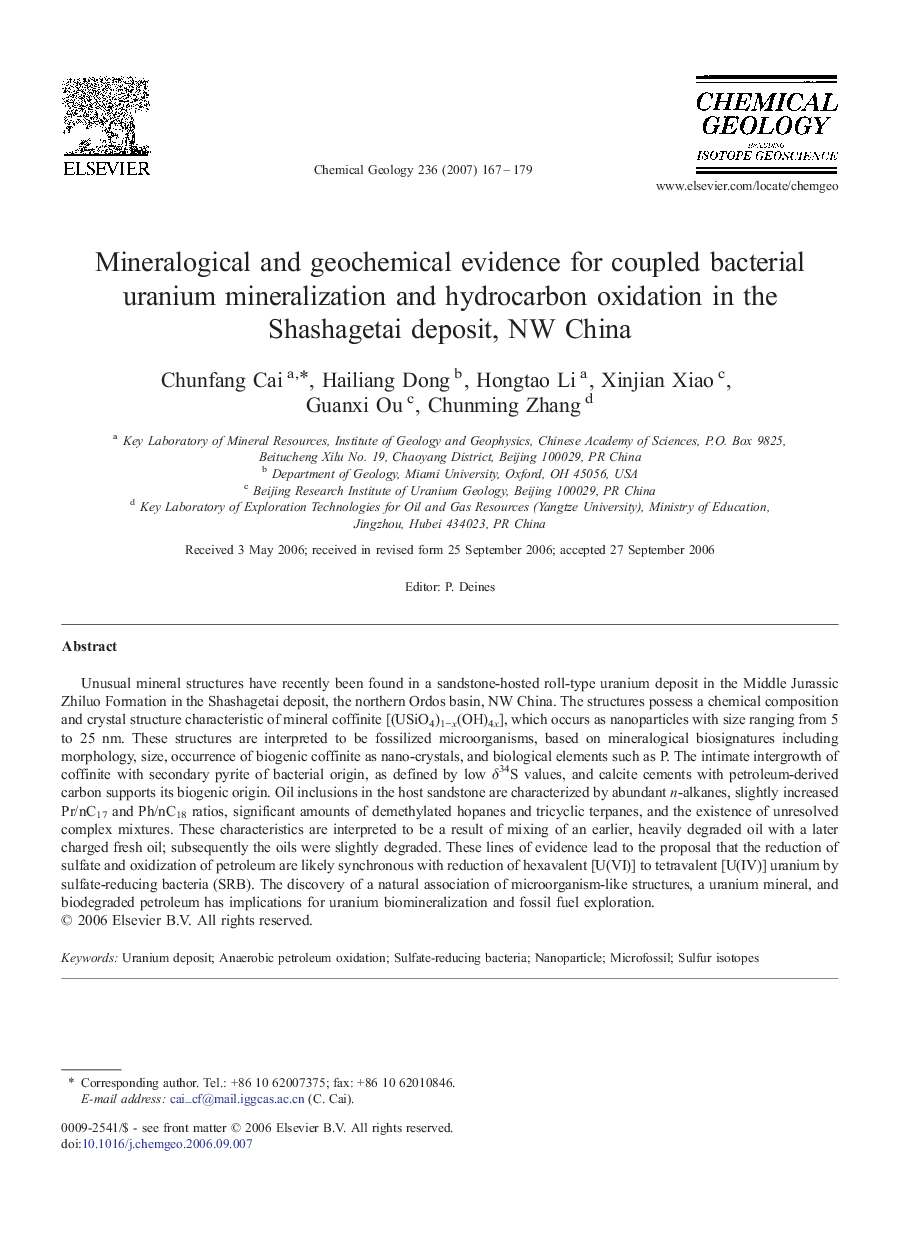| کد مقاله | کد نشریه | سال انتشار | مقاله انگلیسی | نسخه تمام متن |
|---|---|---|---|---|
| 4700957 | 1637758 | 2007 | 13 صفحه PDF | دانلود رایگان |

Unusual mineral structures have recently been found in a sandstone-hosted roll-type uranium deposit in the Middle Jurassic Zhiluo Formation in the Shashagetai deposit, the northern Ordos basin, NW China. The structures possess a chemical composition and crystal structure characteristic of mineral coffinite [(USiO4)1−x(OH)4x], which occurs as nanoparticles with size ranging from 5 to 25 nm. These structures are interpreted to be fossilized microorganisms, based on mineralogical biosignatures including morphology, size, occurrence of biogenic coffinite as nano-crystals, and biological elements such as P. The intimate intergrowth of coffinite with secondary pyrite of bacterial origin, as defined by low δ34S values, and calcite cements with petroleum-derived carbon supports its biogenic origin. Oil inclusions in the host sandstone are characterized by abundant n-alkanes, slightly increased Pr/nC17 and Ph/nC18 ratios, significant amounts of demethylated hopanes and tricyclic terpanes, and the existence of unresolved complex mixtures. These characteristics are interpreted to be a result of mixing of an earlier, heavily degraded oil with a later charged fresh oil; subsequently the oils were slightly degraded. These lines of evidence lead to the proposal that the reduction of sulfate and oxidization of petroleum are likely synchronous with reduction of hexavalent [U(VI)] to tetravalent [U(IV)] uranium by sulfate-reducing bacteria (SRB). The discovery of a natural association of microorganism-like structures, a uranium mineral, and biodegraded petroleum has implications for uranium biomineralization and fossil fuel exploration.
Journal: Chemical Geology - Volume 236, Issues 1–2, 15 January 2007, Pages 167–179